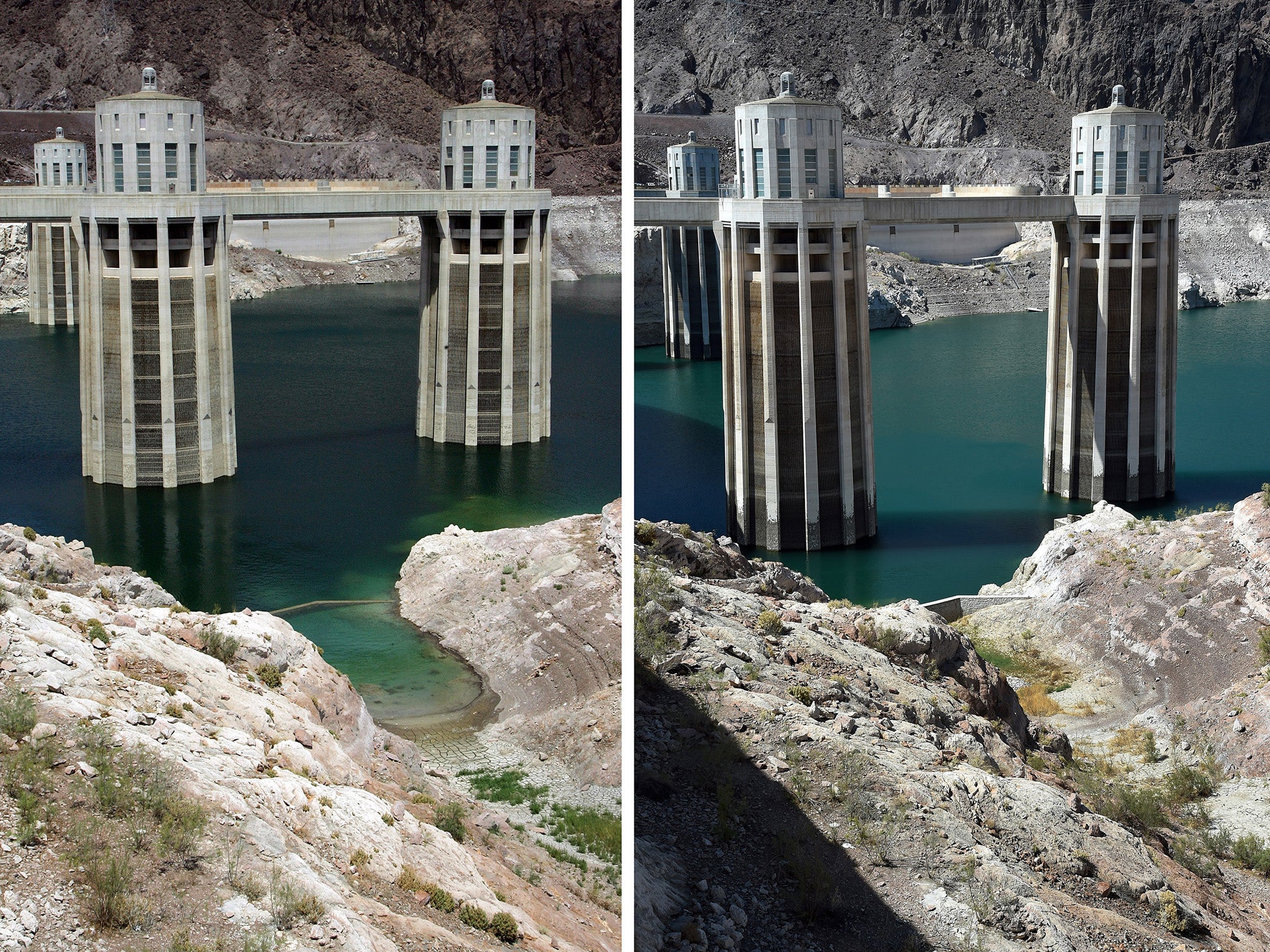Lake Mead’s water level has never been lower, amid historic drought
The reservoir supplies water to some 40 million people

Your support helps us to tell the story
From reproductive rights to climate change to Big Tech, The Independent is on the ground when the story is developing. Whether it's investigating the financials of Elon Musk's pro-Trump PAC or producing our latest documentary, 'The A Word', which shines a light on the American women fighting for reproductive rights, we know how important it is to parse out the facts from the messaging.
At such a critical moment in US history, we need reporters on the ground. Your donation allows us to keep sending journalists to speak to both sides of the story.
The Independent is trusted by Americans across the entire political spectrum. And unlike many other quality news outlets, we choose not to lock Americans out of our reporting and analysis with paywalls. We believe quality journalism should be available to everyone, paid for by those who can afford it.
Your support makes all the difference.The historic drought plaguing the western US has claimed another casualty, as Lake Mead – the vast Nevada reservoir that provides water to some 40 million people in the US Southwest – has dropped to its lowest water level since it first was filled, in 1937.
The record-low water level was 1,080.18 feet (329.24 metres) above sea level, but by Monday afternoon, the water level had fallen to 1,080 feet, the Las Vegas Review-Journal reported.
By 5 pm on Monday, Lake Mead – which was created by the iconic Hoover Dam – had dropped below the 1,080 mark, according to the US Bureau of Reclamation. The surface level when the reservoir is at maximum capacity is 1,221 feet.
Lake Mead is the largest reservoir in the US when at maximum capacity, but now it is at just 38 per cent of that max. Federal forecasters project that the water level could drop as low as 1,073 feet above sea level later this year.
Should that level persist into the start of 2016, it would prompt a shortage declaration which would require states that pull water from the lake to cut back on usage. Those states include Colorado, Nevada, Arizona and California.
Follow @PaytonGuion on Twitter.
Join our commenting forum
Join thought-provoking conversations, follow other Independent readers and see their replies
Comments